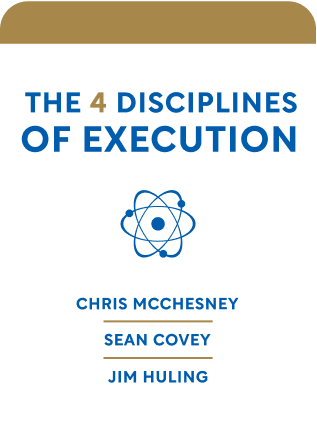

This article is an excerpt from the Shortform book guide to "The 4 Disciplines of Execution" by Chris McChesney, Sean Covey, and Jim Huling. Shortform has the world's best summaries and analyses of books you should be reading.
Like this article? Sign up for a free trial here .
What is the relationship between strategy and execution? How do the two come together to achieve results?
Strategy and execution are the two parts for getting results. Strategy covers what to do to achieve change (the plan) and execution covers how to actually do it.
Read more about strategy and execution, and how they come together.
Combining Strategy and Execution
There are two parts to getting results, strategy and execution. Strategy covers what to do to achieve change (the plan) and execution covers how to actually do it.
Strategy is the easier of the two and traditional business education (such as MBAs) focuses on it. To learn strategy, you study a single organization in depth. You look at “photographs” (single moments in time) of the company or executive. Then you copy what’s working.
Execution is more like a movie. You have to study it over time, and you have to study many different companies. You look at why things happen. Execution, at its most powerful, involves behavioral change, and not just your own. Execution is hard because you have to change the behavior of other people. Sometimes this is the behavior of certain people in the organization, sometimes it’s everyone in the organization. And a grudging agreement to temporarily change won’t work—you need people’s commitment and engagement.
Types of Strategies
There are two main types of strategies, stroke-of-the-pen strategies and behavioral-change strategies:
- Stroke-of-the-pen. These strategies are executed by an order or authorization. They use resources such as planning, money, and so on, and they are almost guaranteed to execute. They sometimes evolve into strategies that require behavioral change
- For example, they are things like a major investment, adding new staff, or changing a product mix.
- Behavioral change. These strategies are executed by getting people to do something different. The resources are people, and these strategies often fail to execute.
- For example, they are things like getting a department to use a new software system, getting two teams to collaborate, or reducing costs.
A study from consulting firm Bain & Company found that about 65% of initiatives required major behavioral changes from front-line staff, and the managers often fail to consider or plan for this. You’re more likely to hear a manager complaining about the specific employees than how hard it is to get people to change their behavior. Specific employees aren’t the reason strategy fails to execute. The system is the reason, and as a leader, the system is your responsibility.

———End of Preview———
Like what you just read? Read the rest of the world's best book summary and analysis of Chris McChesney, Sean Covey, and Jim Huling's "The 4 Disciplines of Execution" at Shortform .
Here's what you'll find in our full The 4 Disciplines of Execution summary :
- The 4 disciplines that can make any strategy a successful reality
- Why a great plan falls apart when you don't think adequately about execution
- The 6 steps you need to scale the 4DX model across an entire organization






